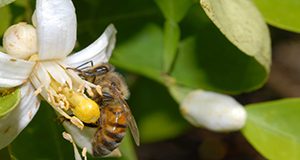Climate, plant communities, and timing of floral resources differ significantly between north, central, and south Florida. While many plants are acceptable pollen producers for honey bees, fewer yield enough nectar to produce a surplus honey crop. The tables in this 12-page fact sheet written by Mary Christine Bammer, William H Kern, and Jamie D. Ellis and published by the UF/IFAS Entomology and Nematology Department list the nectar-bearing plants that are present to some degree in each region and the bloom times for each plant.
http://edis.ifas.ufl.edu/in1223
Tag: William H. Kern
Florida Beekeeping Management Calendar
Climate, plant communities, and timing of floral resources differ significantly across Florida, which means that management of European honey bee colonies in Florida differs as well. This 8-page fact sheet written by James D. Ellis, Mary C. Bammer, and William H. Kern and published by Department of Entomology and Nematology outlines a management calendar created for Florida beekeepers. It is specific to region (north, central, and south Florida) and month and includes recommendations for major management considerations like when to treat for parasites or pathogens and when to feed colonies or harvest honey. This management calendar, while not exhaustive, is a valuable reference or starting point for honey bee colony management in Florida.
http://edis.ifas.ufl.edu/in848
Ant Control in the Apiary
Ants are one of a beekeeper’s most common pests, both in the apiary and in the honey house. Florida and the southeastern United States have a large and diverse ant fauna, with both native and exotic species. The vast majority of ant species have no impact on our bees or us. This 8-page fact sheet written by William H. Kern and published by the UF/IFAS Department of Entomology and Nematology describes the few pest species can cause serious problems and suggests ways to control the ants for healthier hives.
http://edis.ifas.ufl.edu/in1181


